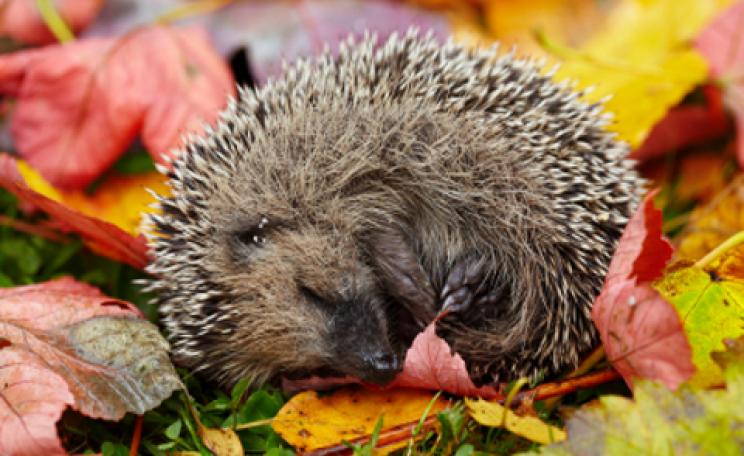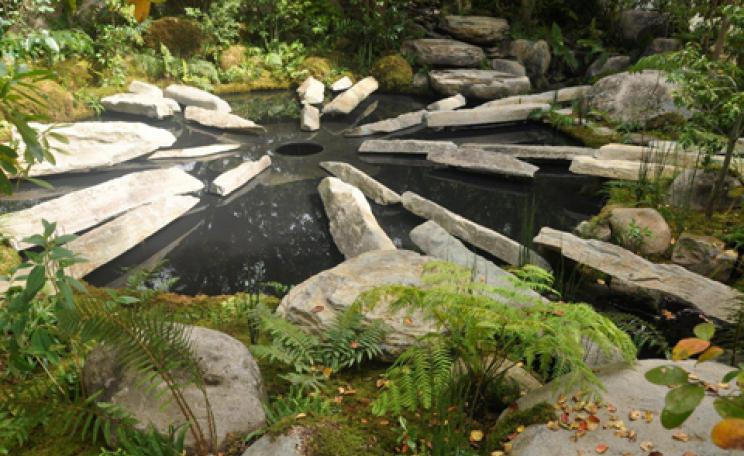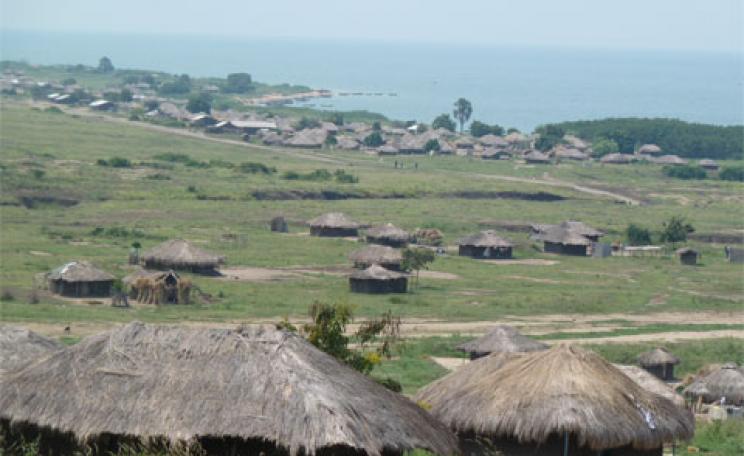Superficially, a natural swimming pool looks like a normal garden pond, but it actually consists of two zones: a deep, central swimming area, and a shallower ‘regeneration’ area where plants, specially chosen to purify the water and harbour wildlife, grow.
Ask most swimming-pool contractors to build a backyard pool and chances are they’ll roll out a long list of materials, including reinforcing steel, cement, fibreglass, an energy-intensive filtration system and an arsenal of chemicals. In contrast, a natural swimming pool cleanses the water by organic means, using the purifying properties of plants. A small filter extracts surface debris such as leaves, and a pump keeps the water circulating sufficiently through the planted area. Building materials, including gravel, stone and clay, are chosen to enhance and blend the pool into the natural landscape.
Because about half of the pool’s space is devoted to aquatic plants, it is as much a garden feature as a pool and can be admired year round without any need to cover it in tarpaulin at the end of summer. It changes constantly with the seasons and matures over the years, allowing the plants to grow into their habitat.
How do they work?
Natural swimming pools use the organic purifying properties of plants and micro- organisms to emulate the clean, clear water of ponds and lakes. The water is kept circulating slowly by differences in temperature in the shallower and deeper zones, and also by a small pump. The regeneration area contains a number of aquatic and semi-aquatic plants such as bulrushes, irises and water lilies, which are planted in shingle or gravel with no topsoil, forcing the plants to extract their nutrients from the water instead. The water is cleaned biologically by the roots of aquatic plants that absorb decomposing materials, bacteria and pollutants and convert them into plant tissue. The leaves of aquatic plants absorb nutrients from the water, restricting the growth of algae.
The advantages of natural swimming pools
- They do not use chemicals:
The chemical-free water avoids the many health concerns associated with conventional pools, such as eye and skin irritations, cancer and respiratory problems.
- They use less water:
Natural pools don’t need constant emptying and refilling. Occasional top-up aside, they only need to be filled once. Filling and refilling conventional pools uses roughly 80 million litres of water in the UK every year.
- They use less energy
A simple mechanical pump and filter passes warmer water from the regeneration area into the swimming area, while the black material lining the swimming area heats up quickly and retains warmth.
- They provide a habitat for wildlife
The regeneration area attracts frogs, toads, dragonflies, damselflies, water boatmen and pond-skaters, which subsequently attract woodland and garden birds, which also drink and bathe in the water.
- They are cheaper than conventional pools over their lifetime
Prices depend on the size of the pool and start from £300 per square metre. Although construction costs may be higher than those of conventional pools, natural pool owners save significant amounts on maintenance costs as their pools do not require expensive filtration equipment and chemicals.
Public natural swimming pools
Natural swimming pools are just beginning to take off in the UK, but they have been popular on the Continent for a number of years. The concept was first developed in Austria, where people have long been conscious of the health benefits of bathing in natural waters at spas and hydros. More than 2,500 natural pools have now been built in Germany, Austria and Italy for hotels, local authorities and private clients.
One of the biggest public natural pools, measuring 5,000 square metres, was completed in Lindenthal near Leipzig in Germany in 1998. The water is cleaned in the regeneration area and returned to the main swimming section via a stream in which children can play. During high summer, more than a thousand people use the pool in a day, but the water stays clean; testing has shown it to be of drinking quality. Planning, constructing and maintaining a public natural swimming pool often become community projects. A number of Austrian communities have become involved in their local natural pools’ construction and now carry out much of the maintenance and supervision, cutting back plants in autumn and cleaning the filters. The natural pool provides a healthy environment not only for swimming but also to learn about local wildlife.
The first similar project in the UK is now underway in Bath. The local community is campaigning to keep open the city’s Cleveland Pleasure Baths, the only surviving Georgian lido in the country, by converting them to natural water-purification methods. Volunteers will be involved with all aspects of the restoration of the baths, including relaying paths and repairing stonework, and the baths will provide facilities for local environmental, youthand sports groups.
What's in your pool?
- Chlorine in pool water reacts with organic compounds in the water such as sweat and urine to produce a host of hazardous chemical compounds that include nitrogen trichloride, aldehydes, halogenated hydrocarbons, chloroform, trihalomethanes and chloramines.
- Trihalomethanes can cause genetic mutations by altering DNA, suppressing immune function and interfering with the natural controls of cell growth. Several studies link chlorinated by-products such as trihalomethanes to a greater incidence of bladder, breast and bowel cancers as well as malignant melanoma.
- Trichloramine has previously been identified as a trigger for three proteins that destroy the cellular barrier protecting the lungs, making individuals more prone to asthma. Belgian researchers writing in the British Journal of Occupational and Environmental Medicine took blood samples from 226 primary school pupils who had swum regularly at indoor pools since early childhood. The samples showed that the children who swam most frequently had protein levels of the kind found in regular smokers.
- Chlorine compounds have also been linked to malformations in unborn babies and stillbirths, which is especially worrying as women are encouraged to swim throughout pregnancy.
----
Design and installation
A handful of UK firms have begun to provide natural swimming pools here, too. The pools provide the health benefits of swimming in a beautiful, bio-diverse setting.
Michael Littlewood: 01460 240168;
www.ecodesignscape.co.uk
Fairwater: 01903 892228; www.fairwater.co.uk
gartenART: 020 7239 8294; www.gartenart.co.uk
Woodhouse Landscape: 01223 290029;
www.woodhouselandscape.co.uk
This article first appeared in the Ecologist July 2005
For ethical and sustainable suppliers of Home and Business goods and services check out the Ecologist Green Directory here






